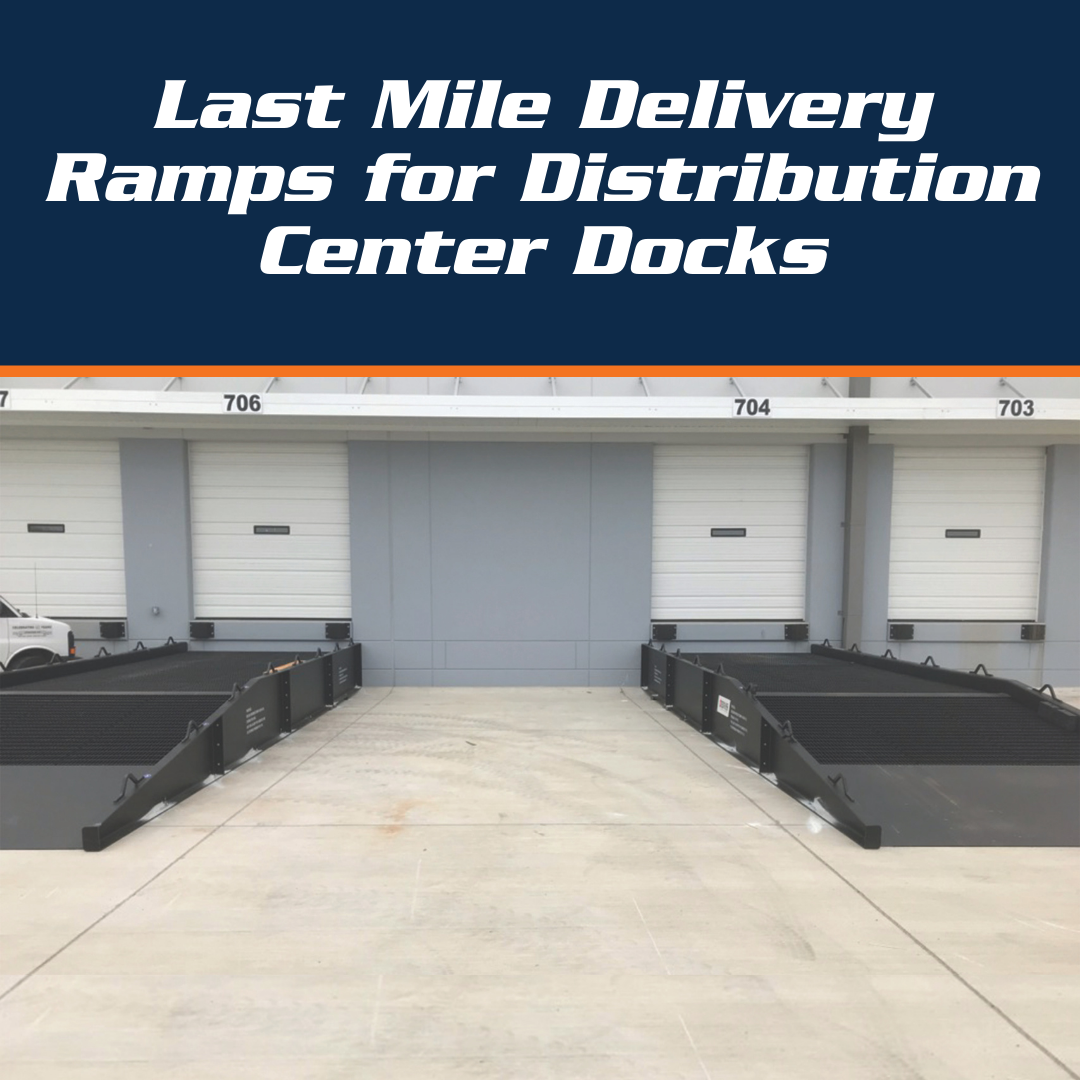We use cookies to make your experience better. To comply with the new e-Privacy directive, we need to ask for your consent to set the cookies. Learn more.
Last Mile Delivery Ramps for Distribution Center Docks
In the United States, most warehouse docks stand somewhere between 45 and 55 inches above the ground. That range works for semi-trailers, even if it’s not an exact match for every bed height. Dock plates and edge-of-dock levelers can usually make up the difference, allowing safe, reasonably flat passage from dock to trailer and back.
But loading docks aren’t just for semis anymore. The e-commerce revolution has led to a glut of small parcel delivery vehicles — box and walk-in trucks, sprinter and cargo vans, even minivans and SUVs — that carry orders the crucial last mile to the customer’s home. No plate can safely bridge the gap between a 55-inch loading dock and a Ford Transit Connect. 
So what’s the solution? The National Institute of Building Sciences says that if bed heights are going to vary by more than 18 inches, the dock needs at least one berth with a loading dock height adjuster. These devices take many forms. One of the simplest and most dependable is a vehicle ramp — also called a “last mile delivery ramp,” and named for the service that makes it so necessary to today’s DC docks.
These hydraulic vehicle ramps adjust to align each vehicle’s bed height with the dock lip. Some lift the entire truck. Others only lift the rear axle. But they all set the floor of the truck bed flush against the floor of the dock, vastly improving safety while speeding up load time for an appreciable productivity boost. Then they collapse back into grade, leaving the dock ready for the next standard-height semi-trailer in line. All the drivers have to do is back onto the ramp and set the parking brake and maybe some wheel chocks.
Advantages of Last Mile Delivery Ramps at Loading Docks
Facilities that can serve parcel delivery vehicles at the dock save considerable time over the course of a shift. Consider the alternative: Sending staff down a dock-to-ground ramp— or, worse, steps — to load the sprinter van waiting at ground level. Not only does this approach add unacceptable travel time to every loading job, it also tends to expose both staff and the parcels they carry to the elements.
You could build a few more berths at different heights, but at that point, you’re basically redesigning the entire dock (and closing the facility for construction). Last mile delivery ramps retrofit any loading dock, and they allow DCs to serve many shapes and sizes of delivery vehicles at a single location. They don’t require new construction or the closing of any part of the dock they’re not attached to.
Unlike dock ramps for forklift and pedestrian traffic, hydraulic vehicle ramps don’t take up much space in the yard. They just need to be long enough for a vehicle to fit — even shorter if they’re only lifting the rear axle.
Dock and Vehicle Ramps from BHS, Inc.
BHS, Inc. manufactures steel dock ramps to match any application, including hydraulic last mile delivery ramps for parcel delivery vehicles of any size. Fill out this form to tell us more about your needs and conditions.
Once we have a few of the details, we’ll work with you to engineer and build a custom solution — whether that’s a hydraulic vehicle ramp, a forklift ramp for dock-to-ground travel, or a truck-to-ground yard ramp for quick loading and unloading without a dock in sight. Start the conversation by calling the BHS Sales Team at 1.800.BHS.9500.
